#jimmy raney
Explore tagged Tumblr posts
Text

Jazz Concert at Town Hall: 'Great Moderns in Jazz', New York, NY, 1954 [Recordmecca]
Feat.: Charlie Parker, Sonny Rollins, Thelonious Monk, Art Farmer, and Horace Silver, with Jimmy Raney and Hall Overton
#graphic design#typography#music#poster#charlie parker#sonny rollins#thelonious monk#art farmer#horace silver#jimmy raney#hall overton#town hall#1950s
33 notes
·
View notes
Text

Storia Di Musica #348 - Jimmy Raney, A, 1957
La Storia della Prestige Records è anche la storia di una intera generazione di musicisti che ebbe la possibilità di incidere, sebbene in modo anticonvenzionale, con la creatura di Bob Weinstock. Weinstock è famoso per altri motivi, su cui ritornerò nelle prossime storie, prima fra tutte la sua estrema "parsimonia" economica, eppure fu un grandissimo talent scout, con un fiuto davvero notevole, tanto che fu fenomenale nel far registrare più cose possibili ad artisti che sapeva sarebbero poi andati verso concorrenti più grandi ed economicamente attrezzati. Oltre a ciò, viveva un eclettismo di produzione che pochissime case editrici avevano: registrò dischi di arpa jazz, duo e trio con strumenti inusuali, persino di musica d' avanguardia (i tre album che Louis Thomas Hardin, conosciuto come Moondog, incise per la Prestige tra il 1956 e il 1957). Il disco di oggi segue un'altra delle passioni di Weinstock, la chitarra jazz. E mise sotto contratto uno dei più fenomenali chitarristi del bop jazz, Jimmy Raney.
Originario del Kentucky, Raney giovanissimo sostituì alla chitarra Tal Farlow, altra leggenda dello strumento e soprannominato Octopus per le sue grandi mani, nel Trio di Red Norvio, altro gigante, vibrafonista, soprannominato Mr. Swing. Parallelamente all'impegno con il trio, è scelto da Stan Getz per una collaborazione che fece scuola, e che regalò a Raney una fortissima fama: nel 1956 vinse il prestigioso concorso della rivista Downbeat come miglior chitarrista del jazz. Eclettico, capace di spaziare tra i vari generi, Raney fu prolifico nonostante due limiti: le sue dipendenze, soprattutto dall'alcool, che lo terranno spesso lontano dalle scene nella seconda parte della sua carriera, e un impedimento fisico, cioè la Sindrome di Menière, una patologia dell'orecchio che gli provocava vertigini, nausee e drammatici momenti dove muoveva in maniera incontrollata gli occhi verticalmente.
Per la Prestige, oltre che come sessionista, incise due dischi, uno in coppia con Kenny Burrell, altro grandissimo chitarrista, (2 Guitars, del 1957), e il disco di oggi, dove come poche volte la chitarra è protagonista in un quartetto jazz. A è composto da diverse sessioni di registrazione, tenute nel mitico Van Gelder Studio di Hackensack, New Jersey, tra il Maggio del 1954 e due giorni, a Febbraio e Marzo del 1955. Insieme a Raney ci sono John Wilson alla tromba, Hall Overton al pianoforte, Teddy Kotick al contrabbasso e due batteristi Art Mardigan (nella registrazione del 1954) e Nick Stabulas (in quelle del 1955). Nei brani si sviluppa tutto l'ecclettismo e la maestria del chitarrista e il suo valore come band leader. Si sperimenta persino l'overdubbing nella spettacolare Minor, brano autografo di Raney, (che si basa sui cambi di accordi di Bernie's Tune); bellissima è anche Double Image (ispirata a There Will Never Be Another You), più un contrappunto selvaggio improvvisato tra Raney e il pianista Hall Overton in On the Square e un'intricata interpretazione della ballata Some Other Spring. John Wilson viene aggiunto alla tromba per la seconda e la terza data in studio, che consistono principalmente di standard. La vivacemente swingante Spring Is Here, una dolce What's New? di Bob Haggart e una delicatissima You Don't Know What Love Is, che dopo il successo come canzone di film anni '40 era diventata in breve tempo uno standard dopo la registrazione che Miles Davis ne fece nel 1954. Gli originali di Raney includono One More For The Mode, una piacevole rielaborazione di un'invenzione in due parti di Johan Sebastian Bach, e Tomorrow, Fairly Cloudy, un bop fiammeggiante. Completano la scaletta due riletture sentite a due classici: A Foggy Day e Someone To Watch Over Me dei superbi George Gershwin e Ira Gershwin.
Raney ebbe una seconda, ma minore, fama all'inizio degli anni '70, quando firmò un contratto per un'altra casa discografica del jazz indipendente, la Xanadu, con cui incise un bellissimo album, Influence, del 1975. Con lui in quegli anni suonava suo figlio Doug, chitarrista anch'egli, e un altro figlio musicista, Jon, cura un sito memoriale, The Raney Legacy, che raccoglie materiale sul padre e figlio chitarristi. Quando morirà, nel maggio del 1995 a soli 67 anni, il New York Times gli dedicherà un lungo articolo omaggio, descrivendolo come "one of the most gifted and influential postwar jazz guitarists in the world".
8 notes
·
View notes
Text
Jimmy Raney: The Subtle Master of Cool Jazz Guitar
Introduction: In the annals of jazz history, few guitarists have made as profound an impact as Jimmy Raney. Born James Elbert Raney ninety-seven years ago today on August 20, 1927, in Louisville, Kentucky, Raney’s career spanned five decades and was marked by a distinctive style that helped shape the sound of cool jazz. Known for his quiet yet intensely expressive playing, Raney was a master of…
#Al Haig#Artie Shaw#Buddy DeFranco#Cool Jazz#Doug Raney#Jazz Guitarists#Jazz History#Jimmy Raney#Max Miller Quartet#Nardis#Prezervation#Red Norvo Trio#Stan Getz#Stan Getz Plays#Stolen Moments#Tal Farlow#Woody Herman#Woody Herman Orchestra
1 note
·
View note
Text

本日のおはジャズ「Swingin' In Sweden」Jimmy Raney & George Wallington '53 & '54
レイニーとウォリントンのアルバムだけど、二人の共演は無し(笑) それぞれのユニットで演ってます。オリジナルは車の上に二人して座ってる写真なんですけどね。そちらは6曲しか入ってませんが、このリイシュー盤は他のユニットも追加され10曲入りです。
目玉は、レイニーとソニー・クラークという珍しい組み合���せ。このアルバムでは2曲しか有りませんが、「In Paris」ではステラを始め沢山演ってるみたい。ここではレイニーの、時代とそぐわない(最近のコンテンポラリー・ジャズに聴こえる)クールなオリジナル曲が愉しめます。
他にもハルベルグがピアノのセッションも有ります。このハルベルグ、ハーモニーセンスが素晴らしいと思います。でも、ゲッツと演った「In Stockholm」('56)では超イマイチでした。緊張しちゃったのかな。チャレンジしてリズムがひっくり返ったり、なんか全編古臭い演奏って感じ。でも、それがここでは全くの別人です。レイニーが嫌いっていうギターリストが多いんだけど何でか分からん(笑) 僕は大好きです。コピーしたいくらい。参加したスウェーデンの特にリード奏者達はちょっとアウトしたり、こちらもハーモニーセンスが素晴らしい。
一方、ウォリントンのユニットはラージアンサンブルで割と伝統的なバップスタイル。ここでもアルト奏者が面白いアプローチを魅せてくれます。
他にはレッド・ミッチェルのラージアンサンブルやアニー・ロス(vo)の渡米前の録音がボーナストラックで入ってます。ラージアンサンブルはやはりマイルスのクールの誕生をお手本にしてる感じがします。49年のあの作品はやはり相当衝撃的だったんでしょうね。そして、ロスは以前もズートとの共演アルバムを紹介しましたが、本当に上手いボーカリストだと思います。ワーデル・グレイのソロをスキャットしてますが、もう楽器です。
お目当てのアメリカ人ミュージシャンは勿論の事、当時のスウェーデンのミュージシャン達の質の高さを知る事が出来た良いアルバムです。


#jazz#guitar#jimmy raney#pianist#george wallington#bassist#red mitchell#vocalist#annie ross#レコード好き#vynil
1 note
·
View note
Text

Urbie Green – Blues and Other Shades of Green
Blues and Other Shades of Green is an album by trombonist Urbie Green which was recorded in 1955 and released on the ABC-Paramount label. Urbie Green – trombone, valve trombone Jimmy Raney – guitar Dave McKenna – piano Percy Heath – bass Kenny Clarke – drums
13 notes
·
View notes
Text
LÉGENDES DU JAZZ
UN GUITARISTE SOUS-ESTIMÉ, GRANT GREEN
"A severely underrated player during his lifetime, Grant Green is one of the great unsung heroes of jazz guitar Green's playing is immediately recognizable – perhaps more than any other guitarist."
- Michael Erlewine et Ron Wynn
Né le 6 juin 1935 à St. Louis, au Missouri, Grant Green était le seul enfant de John et Martha Green. Le père de Green avait été manoeuvre et policier à St. Louis. Green avait commencé à apprendre la guitare à l’école primaire après avoir reçu de premières leçons de son père, qui jouait du blues et de la musique folk. Même s’il avait étudié durant un an avec Forrest Alcorn, Green avait surtout appris à jouer en autodidacte en tentant de reproduire les disques qu’il écoutait. Très actif dans les programmes de musique de son high school, Grant avait également joué de l’ukulele, tout en se produisant dans un ensemble de cors et clairons et en chantant dans les chorales des écoles publiques de St. Louis.
DÉBUTS DE CARRIÈRE
Green, qui avait abandonné l’école en huitième année, avait amorcé sa carrière professionnelle à l’âge de treize ans avec un groupe de gospel. Green était dans la vingtaine lorsqu’il s’était installé à New York où il avait joué avec des groupes de jazz et de rhythm & blues. Très influencé par Charlie Christian, Charlie Parker, Lester Young, Miles Davis, Jimmy Smith et Jimmy Raney, Green imitait le son des saxophonistes dans son jeu, en se concentrant sur les notes plutôt que sur les accords.
Green avait d’abord joué du boogie woogie avant de se tourner vers le jazz. Comme Green l’avait expliqué au cours d’une entrevue qu’il avait accordée au magazine Down Beat au début des années 1960: "The first thing I learned to playwas boogie-woogie. Then I had to do a lot of rock and roll. It's all blues, anyhow."
Green avait fait ses débuts sur disque à l’âge de vingt-huit ans avec le saxophoniste ténor Jimmy Forrest dans le cadre d’un groupe qui comprenait également le batteur Elvin Jones. Green avait d’ailleurs enregistré plusieurs albums avec Jones au milieu des années 1960. En 1959, le saxophoniste alto Lou Donaldson avait entendu Green dans un club de St. Louis et l’avait engagé avec son groupe de tournée. Donaldson avait présenté Green au président des disques Blue Note, Alfred Lion, qui l’avait engagé comme guitariste-maison avec la firme. Conscient du potentiel de Green, plutôt de le confiner à un simple rôle d’accompagnateur, Lion lui avait permis de diriger sa propre session d’enregistrement. Malheureusement, en raison du manque de confiance chronique de Green, la session avait été publiée seulement en 2001, sous le titre de ‘’First Session.’’ Green avait aussi collaboré avec Donaldson dans le cadre de l’enregistrement de l’album ‘’Here ‘Tis’’.
Malgré le caractère prometteur de la session, la relation de Green avec Blue Note ne s’était pas prolongée au-delà de la décennie de 1960. De 1961 à 1965, Green avait participé à plus de sessions pour Blue Note que n’importe quel autre artiste, tant comme leader que comme accompagnateur. Intitulé First Stand, le premier album de Grant comme leader (1961) avait été suivi la même année de Green Street et Grantstand. Élu meilleur artiste de la relève (Best New Star) dans le cadre du sondage des critiques du magazine Down Beat en 1962, Green avait fait une tournée au Nigeria la même année.
Grant avait aussi souvent accompagné d’autres musiciens qui étaient à l’emploi de Blue Note, dont les saxophonistes Hank Mobley, Ike Quebec, Harold Vick et Stanley Turrentine et les organistes Larry Young et Big John Patton
Après avoir enregistré des albums concept comme ‘’Sunday Mornin''' (1962) , ’The Latin Bit’’ (1963) et ‘’Feelin' the Spirit’’ (1963), tous consacrés à un style différent, Green avait obtenu un certain succès commercial avec des albums comme ‘’Idle Moments’’ (qui mettait en vedette le saxophoniste Joe Henderson et le vibraphoniste Bobby Hutcherson en 1963), et Solid (1964), qui avaient été décrits par la critique comme les meilleurs enregistrements de sa carrière. Considéré comme un des 100 meilleurs albums de jazz de l’histoire, l’album Idle Moments avait remporté un grand succès.
Plusieurs des enregistrements de Green n’avaient été publiés qu’après sa mort. Parmi ceux-ci, on remarquait quelques albums enregistrés avec le pianiste Sonny Clark en 1961-62 qui avaient été réédités sous le titre de The Complete Grant Green & Sonny Clark en 1997 par les disques Mosaic. En 1964, Green avait enregistré un autre album sous son nom, ‘’Matador’’, mais il n’avait été publié que l’année de sa mort en 1979. La même année, il avait également enregistré deux albums avec McCoy Tyner et Elvin Jones.
DERNIÈRES ANNÉES
En 1966, Green avait quitté Blue Note et avait commencé à enregistrer avec d’autres étiquettes, dont les disques Verve de Norman Granz avec qui il avait enregistré l’album His Majesty King Funk la même année. De 1967 à 1969, Green s’était retiré du jazz en raison de sa dépendance à l’héroïne. Retourné chez Blue Note en 1969, Green avait surtout joué dans des contextes de R & B. Parmi les albums enregistrés par Green à cette époque, on remarquait le disque à succès Green Is Beautiful (1970) et la bande sonore du film The Final Comedown (1969) et un album en concert intitulé Live at the Lighthouse (1972)
En 1971, peu après s’être produit au The Watts Club Mozambique de Detroit, Green avait publié l’album Shades of Green. Publiée comme simple, la pièce “Vision’’ avait remporté un grand succès et s’était classée à la 151e position du Billboard où elle était demeurée durant une période de neuf semaines. Après avoir de nouveau quitté les disques Blue Note en 1974, Green avait enregistré de façon sporadique avec différentes maisons de disques. Tout en collaborant avec des formations plutôt conventionnelles, Green s’était régulièrement produit avec un trio comprenant un organiste et un batteur.
Après avoir passé la majeure partie de l’année 1978 à l’hôpital, Green avait ignoré l’avis de ses médecins et était parti sur la route afin de gagner de l’argent. Green se trouvait à New York pour jouer au Breezin' Lounge de George Benson lorsqu’il avait été victime d’une crise cardiaque dans son automobile. Il est mort le 31 janvier 1979. Green a été enterré au Greenwood Cemetery de St. Louis. Il laissait dans le deuil ses six enfants, dont son fils Grant Green Jr., qui était également guitariste.
Grant Green, qui avait rarement joué de la guitare rythmique sauf comme accompagnateur, a enregistré plus de trente albums au cours de sa carrière. Green avait influencé de nombreux guitaristes, dont George Benson et Carlos Santana. Guitariste souvent sous-estimé, Green avait inspiré le commentaire suivant aux critiques Michael Erlewine et Ron Wynn: "A severely underrated player during his lifetime, Grant Green is one of the great unsung heroes of jazz guitar Green's playing is immediately recognizable – perhaps more than any other guitarist."
©-2024, tous droits réservés, Les Productions de l’Imaginaire historique
SOURCES:
ALEXANDER, Otis. ‘’Grant Green (1935-1979).’’ Blackpast.org, 22 février 2024.
‘’Grant Green.’’ Wikipedia, 2024.
‘’Grant Green.’’ All About Jazz, 2024.
‘’Grant Green, Jazz Guitarist born.’’ African American Registry, 2024.
2 notes
·
View notes
Text
My Alternative 96th Academy Awards
This is an exercise that has not appeared on this blog since 2019 for the 91st ceremony. But I wanted to revive it. So what would tomorrow's Academy Awards ceremony looked like if I determined all the nominees and the winners? This is my ideal world, my alternative universe, if you will. Prepare for controversy, and my ambivalence towards Poor Things and The Zone of Interest (which doesn't get nominated at all here).
It's been a while since I've done this, so there might be some quirks newer followers are less familiar with. Most notably, if you see a three letter abbreviation anywhere, that indicates a movie not in the English language and indicates the country/countries of origin based on their three-letter FIFA code of all things.
Without further ado!
96th Academy Awards – March 10, 2024 Dolby Theatre – Hollywood, Los Angeles, California Host: Jimmy Kimmel Broadcaster: ABC
Best Picture: KILLERS OF THE FLOWER MOON
Anatomy of a Fall (FRA), Marie-Ange Luciani and David Thion (Neon/Le Pacte)
Barbie, David Heyman, Margot Robbie, Tom Ackerley, and Robbie Brenner (Warner Bros.)
The Holdovers, Mark Johnson (Focus/Universal)
Killers of the Flower Moon, Dan Friedkin, Bradley Thomas, Martin Scorsese, and Daniel Lupi (Apple/Paramount)
Oppenheimer, Emma Thomas, Charles Roven, and Christopher Nolan (Universal)
Past Lives, David Hinojosa, Christina Vachon, and Pamela Koffler (A24)
Robot Dreams (ESP/FRA), Ibon Cormenzana, Ignasi Estapé, Sandra Tapia, Jérôme Vidal, and Pablo Berger (Neon/Bteam Pictures/Wild Bunch)
Spider-Man: Across the Spider-Verse, Phil Lord, Christopher Miller, Amy Pascal, Avi Arad, and Christina Steinberg (Sony Pictures Animation/Columbia)
The Taste of Things (FRA), Olivier Delbosc (Gaumont)
20 Days in Mariupol (UKR), Raney Aronson-Rath, Mstyslav Chernov, Derl McCrudden, and Michelle Mizner (Associated Press/Public Broadcasting Service)
Am I nuts? A documentary (there's nothing in the rules that say they can't be nominated for Best Picture)? Why not? TWO animated features? Let alone a movie that almost nobody outside of Europe has seen? Well I've seen Robot Dreams, and it is one of the best 2023 release I saw all year.
My full thoughts on my favored film, Killers of the Flower Moon, can be found in my write-up here.
Six of the current Best Picture nominees keep their nomination. American Fiction, Maestro, Poor Things, and The Zone of Interest are dropped. In their place go Robot Dreams, Spider-Man: Across the Spider-Verse, The Taste of Things, and 20 Days in Mariupol. I strongly considered replacing Barbie, but decided against it. Yes, I believe there were more than ten movies better than Barbie this year. But I richly *enjoyed* Barbie, and appreciate its instant spot in film history. It stays in.
Best Director
Joaquin Dos Santos, Kemp Powers, and Justin K. Thompson, Spider-Man: Across the Spider-Verse
Christopher Nolan, Oppenheimer
Martin Scorsese, Killers of the Flower Moon
Trần Anh Hùng, The Taste of Things
Justine Triet, Anatomy of a Fall
Folks are saying Martin Scorsese is not nearly as innovative as he used to be. Au contraire, I say. Killers of the Flower Moon exemplifies tons of personal and artistic growth for him... and that extremely risky ending pays off dividends. As a Nolan skeptic, I am indeed impressed with his work on Oppenheimer, but it's not the "best" for me this year.
Those familiar with my affiliation with Viet Film Fest might detect some bias, but hell The Taste of Things was gorgeous, folks.
Best Actor
Bradley Cooper, Maestro
Colman Domingo, Rustin
Paul Giamatti, The Holdovers
Cillian Murphy, Oppenheimer
Jeffrey Wright, American Fiction
It's a toss-up to me. But, having to choose one, I'll go for a man who is probably overdue.
Best Actress
Lily Gladstone, Killers of the Flower Moon
Sandra Hüller, Anatomy of a Fall
Alma Pöysti, Fallen Leaves (FIN)
Margot Robbie, Barbie
Emma Stone, Poor Things
The first acting change from the actual Oscars appears here, with Finnish actress Alma Pöysti replacing Annette Bening in Nyad. But this should be Lily Gladstone's, who would justly be making a lot of history here.
And yes, Barbie fans... I relent. Margot Robbie makes my final cut.
Best Supporting Actor
Sterling K. Brown, American Fiction
Robert De Niro, Killers of the Flower Moon
Robert Downey Jr., Oppenheimer
Ryan Gosling, Barbie
Dominic Sessa, The Holdovers
I don't think RDJ should be sweeping the season as he has. I think it's a lot closer between all of these fellows than it actually has been. Disagree with me all you want, but I think De Niro was truly menacing in KOTFM. And he didn't need any deaging this time, either!
Best Supporting Actress
Juliette Binoche, The Taste of Things
Emily Blunt, Oppenheimer
Danielle Brooks, The Color Purple
Penélope Cruz, Ferrari
Da’Vine Joy Randolph, The Holdovers
Fine, I guess? I think Randolph's character gets cut out of The Holdovers far too soon. But I can't make the case for anyone else this year except for maybe Binoche (whom some people will complain about my placement in Supporting Actress instead of Lead Actress, but that's how the studio campaigned for her).
Best Adapted Screenplay
Pablo Berger, Robot Dreams
Greta Gerwig and Noah Baumbach, Barbie
Cord Jefferson, American Fiction
Christopher Nolan, Oppenheimer
Eric Roth and Martin Scorsese, Killers of the Flower Moon
I'm not going to second-guess the Academy on its placement of Barbie here. It's not winning in this category in any case. American Fiction is a solid, imperfect satire, and finds its due here.
Best Original Screenplay
İlker Çatak and Johannes Duncker, The Teachers’ Lounge (GER)
David Hemingson, The Holdovers
A.V. Rockwell, A Thousand and One
Celine Song, Past Lives
Justine Triet and Arthur Harari, Anatomy of a Fall
I was very, very tempted to give this to Past Lives. But in the end, my sneaking feeling that I don't quite buy the closeness - despite having not talked for so long - of the two lead characters wins out.
Anatomy of a Fall is a hell of a balancing act, domestically and legally, and wins here.
Best Animated Feature
The Boy and the Heron, Japan (GKIDS/Studio Ghibli/Toho Company)
Ernest & Celestine: A Trip to Gibberitia, France (GKIDS/StudioCanal)
Robot Dreams, Spain/France (Neon/Bteam Pictures/Wild Bunch)
Spider-Man: Across the Spider-Verse (Sony Pictures Animation/Columbia)
Suzume, Japan (GKIDS/Toho Company)
Stoking the flames, but here we are! I think ATSV is slightly better than Robot Dreams as a whole, but the film lacks a resolution and obviously had access to more resources. Spider-Man will return to this category. I'm not so sure about Pablo Berger. The heartfelt and dialogue-free Robot Dreams takes it, while the Ernest & Celestine sequel and Suzume make it in place of Elemental and Nimona.
Best Documentary Feature
Bobi Wine: The People’s President (National Geographic)
The Eternal Memory, Chile (MTV Documentary Films)
Four Daughters, Tunisia/France/Germany/Saudi Arabia (Kino Lorber/Jour2Fête)
To Kill a Tiger, Canada (National Film Board of Canada)
20 Days in Mariupol, Ukraine (Associated Press/Public Broadcasting Service)
Extraordinary filmmaking and, as you can imagine, brutal to watch. It's freely available online for any American readers out there, thanks to PBS.
Best International Feature
Fallen Leaves, Finland
Society of the Snow, Spain
The Taste of Things, France
The Teachers’ Lounge, Germany
20 Days in Mariupol, Ukraine
I follow Academy rules here in terms of one movie per country.
Best Cinematography
Edward Lachman, El Conde
Rodrigo Prieto, Killers of the Flower Moon
Mathtew Libatique, Maestro
Hoyte van Hoytema, Oppenheimer
Jonathan Ricquebourg, The Taste of Things
Best Film Editing
Laurent Sénéchal, Anatomy of a Fall
Kevin Tent, The Holdovers
Thelma Schoonmaker, Killers of the Flower Moon
Jennifer Lame, Oppenheimer
Michael Andrews, Spider-Man: Across the Spider-Verse
Best Original Score
Michael Giacchino, Society of the Snow
Laura Karpman, American Fiction
Robbie Robertson, Killers of the Flower Moon (posthumous nomination)
John Williams, Indiana Jones and the Dial of Destiny
Hans Zimmer, The Creator
The folks who complained that Dial of Destiny was not original enough need to go 1) watch the movie and 2) listen to the score afterwards. There was a distinct lack of older Indiana Jones cues in there, and "Helena's Theme" is the best cue of 2023. Too many people online write about film scores but have little idea about what they're talking about (*cough* David Ehrlich at IndieWire *cough*).
That said, Williams doesn't win here. It's Giacchino, for a score that does a hell lot of the heavy emotional lifting in a grim movie that concludes with its real-life happy ending.
Best Original Song
“I’m Just Ken”, music and lyrics by Mark Ronson and Andrew Wyatt, Barbie
“It Never Went Away”, music and lyrics by Jon Batiste and Dan Wilson, American Symphony
“Wahzhazhe (A Song for My People)”, music and lyrics by Scott George, Killers of the Flower Moon
“What Was I Made For?” music and lyrics by Billie Eilish and Finneas O’Connell, Barbie
Four nominees rather than five, because I didn't like much else that was shortlisted. This category has been my personal hell in recent years.
Best Costume Design
Jacqueline Durran, Barbie
Jacqueline West, Killers of the Flower Moon
Janty Yates and Dave Crossman, Napoleon
Ellen Mirojnick, Oppenheimer
Holly Waddington, Poor Things
Best Makeup and Hairstyling
Karen Hartley Thomas, Suzi Battersby, and Ashra Kelly-Blue, Golda
Kazu Hiro, Kay Georgiou, and Lori McCoy-Bell, Maestro
Luisa Abel, Oppenheimer
Nadia Stacey, Mark Coulier, and Josh Weston, Poor Things
Ana López-Puigcerver, David Martí, and Montse Ribé, Society of the Snow
Best Production Design
Sarah Greenwood and Katie Spencer, Barbie
Jack Fisk and Adam Willis, Killers of the Flower Moon
Arthur Max and Elli Griff, Napoleon
Ruth De Jong and Claire Kaufman, Oppenheimer
James Price, Shona Heath, and Zsuzsa Mihalek, Poor Things
Best Sound
Ian Voigt, Erik Aadahl, Ethan Van der Ryn, Tom Ozanich, and Dean Zupancic, The Creator
Steven A. Morrow, Richard King, Jason Ruder, Tom Ozanich, and Dean Zupancic, Maestro
Chris Munro, James H. Mather, Chris Burdon, and Mark Taylor, Mission: Impossible – Dead Reckoning Part One
Willie Burton, Richard King, Gary A. Rizzo, and Kevin O'Connell, Oppenheimer
Steven Ghouti, Fabiola Ordoyo, and Laia Picón, Robot Dreams
Best Visual Effects
Jay Cooper, Ian Comley, Andrew Roberts, and Neil Corbould, The Creator
Sanjay Bakshi, Stephen Marshall, Jon Reisch, Junyi Ling, Elemental
Takashi Yamazaki, Kiyoko Shibuya, Masaki Takahashi, and Tatsuji Nojima, Godzilla Minus One
Alex Wuttke, Simone Coco, Jeff Sutherland, and Neil Corbould, Mission: Impossible – Dead Reckoning Part One
Michael Lasker, Alan Hawkins, Bret St. Clair, Pav Grochola, Spider-Man: Across the Spider-Verse
Best Animated Short
Letter to a Pig, Israel/France (The Hive Studio/Miyu Productions)
Ninety-Five Senses (MAST/V42 Venture Studio Fund)
Our Uniform, Iran
Pachyderme, France (Miyu Distribution)
War Is Over! Inspired by the Music of John and Yoko (ElectroLeague)
Full write-up on this category by yours truly here.
Best Documentary Short
The ABCs of Book Banning (MTV Documentary Films)
The Barber of Little Rock (The New Yorker)
The Island in Between, Taiwan (The New York Times)
The Last Repair Shop (Los Angeles Times/Searchlight)
Nǎi Nai & Wài Pó (Walt Disney)
Full write-up on this category by yours truly here. Please don't let The ABCs of Book Banning win, I s2g.
Best Live Action Short
The After (Neon/Netflix)
Invincible, Canada (H264 Distribution)
Knight of Fortune, Denmark (TV 2)
Red, White and Blue (Majic Ink Productions)
The Wonderful Story of Henry Sugar (Netflix)
Full write-up on this category by yours truly here. But we all know Henry Sugar is gonna win it due to Wes Anderson name recognition.
Academy Honorary Awards: Angela Bassett, Mel Brooks, and Carol Littleton
Jean Hersholt Humanitarian Award: Michelle Satter
MULTIPLE NOMINEES (18) Twelve: Oppenheimer Eleven: Killers of the Flower Moon Eight: Barbie Six: The Holdovers Five: Anatomy of a Fall, Spider-Man: Across the Spider-Verse, The Taste of Things Four: American Fiction, Poor Things, Robot Dreams Three: The Creator, Mission: Impossible – Dead Reckoning Part One, Society of the Snow, 20 Days in Mariupol Two: Fallen Leaves, Napoleon, Past Lives, The Teachers’ Lounge
WINNERS 4 wins: Killers of the Flower Moon
2 wins: The Holdovers, Oppenheimer, Society of the Snow
1 win: American Fiction, Anatomy of a Fall, Barbie, Godzilla Minus One, Knight of Fortune, The Last Repair Shop, Letter to a Pig, Poor Things, Robot Dreams, Spider-Man: Across the Spider-Verse, The Taste of Things, 20 Days in Mariupol
16 winners from 23 categories. 34 feature-length films and 15 short films were represented.
#96th Academy Awards#Oscars#Killers of the Flower Moon#Oppenheimer#Barbie#The Holdovers#Anatomy of a Fall#ATSV#The Taste of Things#American Fiction#Poor Things#Robot Dreams#The Creator#20 Days in Mariupol#Society of the Snow#La sociedad de la nieve#Godzilla Minus One#Past Lives#31 Days of Oscar
2 notes
·
View notes
Text
youtube
Jimmy Raney with Sonny Clark "Stella By Starlight"
今宵は、コレ。レジェンドお二人の演奏。それにしても、この曲Stella By Starlight一体どれほど演奏されているのでしょうか。大人気曲ですね。
5 notes
·
View notes
Note
Comics this week?
Superman #4 - How? How is this so good? How did Williamson go straight from Dark Crisis into writing this? Is it just because he and Waid are talking regularly per separate interviews with the two of them, because the rise in quality here is enough to give me whiplash. It's like Williamson has read my blog because he's making moves I've been begging to see get made. Tying Silver Banshee with the Phantom Zone! Giving Metropolis a personality of it's own by making it obsessed with the future and contemptuous of it's past, to the point there are ruins of old "Cities of Yesterday" underneath the current city, which perfectly connects with the Moonlight plot thread of her being the ghost that haunts it! Jimmy Olsen being relevant and useful because he's a native Metropolitan unlike Lois and Clark, so he knows the history of the city in a way they don't! Plus he's dating Banshee who isn't even in the top 5 weirdest dates he's had, but might be one of the hottest. Wasn't sure if the first arc was simply beginner's luck, but now that the quality hasn't dipped in the second arc I rate Williamson's run higher even than PKJ Action. And I still greatly enjoy Action! What a nice experience to have where both of the mainline Superman books are worth reading.
World's Finest #15 - Coming down off my high from Williamson, this remains fine. Feels like Waid is on autopilot with this arc, "Newmazo" is a terrible name. At least next issue promises more Supergirl/Robin interactions which will hopefully liven the story up.
The Brave & The Bold #1 - Got this mainly for the Superman story but the other three weren't bad. King described this Batman story as "burgers and fries", what you see is what you get. If you want a dark, gritty Batman vs. Joker story, that's what this offers. Stormwatch has great art, Jeff Spokes reminds me of Ryan Sook, but I don't love the team. Needs more proper Wildstorm characters, and seriously who the fuck cares about Peacekeeper anymore? Kill him off ASAP. Mora's story had great art of course but the plot was just an excuse for him to do cyberpunk Batman art. Finally the story I actually bought the book for was the strongest of the four which was nice. Cantwell has a good handle on Superman's voice, I was surprised to see this takes place in mainline continuity, but the real draw for me was always seeing Javier Rodriguez draw Superman. Glad to share he does not disappoint, loved the page where Clark and Lois are examining the decoder ring.
Vigil #1 - Less of a superhero book and more of a spy one, but no less enjoyable for that. Ram V said he was drawing on Wildstorm and Planetary for this book and that is seen in spades. Morally ambiguous anti-heroes whose goals aren't mainly concerned with saving people, and who don't shrink at lethal force are exactly the kind of protagonists you'd expect to see in a Wildstorm book. I like this team, they feel like a group that could be different enough from the Justice League to justify their existence, unlike quite a few other teams.
Cyborg #1 - Ok first issue. Hampton is a relative newcomer to comics and that shows in some places like the clunky dialogue from the kids. Raney's art isn't a favorite of mine, and the cover being so different from the interiors is going to turn some folks away.
Superboy #2 - Cosmoteers are assholes, not sure if Porter will be able to win me over into liking them, but it makes for funny interactions at least. Superboy resolving to TTK punch his way through an enemy fleet is the most like his 90s self he's been since he came back wearing that look.
X-Men #22 - Was on the fence about dropping this too, but Duggan bought himself a stay of execution by finally moving the ORCHIS plot forward. Makes sense that ORCHIS would move on the wider superhuman community after the mutants when you remember that ORCHIS is just a front for the machines to take over. Speaking of which, Omega Sentinel returns! Are they finally going to address that turning Moira into a villain means we now have two characters who are functionally the exact same on ORCHIS? OS and Moira are both former X-Men allies turned enemies, both have transitioned from organic to robotic bodies, both founded organizations to prevent the futures they lived through from coming to pass, etc. Hickman worked hard to make OS into Moira's opposite for the machines, yet now that the two are on the same side we've never even seen them interact! Fall of X needs to change that.
Hulk Annual - Meh main story, but the epilogue pages got me pumped to finally get my hands on PKJ Hulk in a month.
Avengers #1 - For all Aaron's efforts, this feels more like Morrison JLA than anything he came up with. Everyone is competent and contributes to the fight, the art is great, and the tease at a larger plot with Kang sounds fun. First time since Hickman that I'm planning on reading the Avengers regularly again.
Fantastic Four #7 - Another fantastic issue, this time finally featuring Doom. Hickman was my entry run into F4 and made me a sucker for "Doom's ego is so great he would rather destroy reality than lose face" stories.
4 notes
·
View notes
Text
12/29 おはようございます。Tony Perkins / On A Rainy Afternoon NL-45984等更新しました。
Tony Perkins / On A Rainy Afternoon NL-45984 Antonio Carlos Jobim / The Wonderful World Of Antonio Carlos Jobim ws1611 Booker Ervin / Exultation prst7293 Mel Powell / Thigamagig vrs8502 Alex Kallao trio / an Evening at Embers Ljm1011 Terry Gibbs / Terry Gibbs mg36047 Jimmy Raney / Momentum 2021757-4 Steve Grossman / Way Out East Vol1 vpa176 Donald Byrd / Stepping into Tomorrow bn-la368-g Luis Vagner / Luis Vagner Colp12064 VA / Traditional Music Of The Garifuna (Black Carib) Of Belize FE4031 Luther / Luther SD9907 Chairmen of the Board / Bittersweet st-9801 Ovations / Hooked on a Feeling Som7001 Ingram Kingdom / the Funk is Our Music 8031


0 notes
Text
Jimmy Raney / Richard Davis (2) / Alan Dawson - Momentum (LP, Album, RE)
Vinyl(VG+) Sleeve(VG) Insert(VG+) Obi(missing) / / missing Obi 帯なし / Sleeve has foxing. / コンディション 盤 : Very Good Plus (VG+) コンディション ジャケット : Very Good (VG) コンディションの表記について [ M > M- > VG+ > VG > G+ > G > F > P ] レーベル : MPS Records – ULX-17-P フォーマット : Vinyl, LP, Album, Reissue 生産国 : Japan 発売年 : Made In Japan ジャンル : Jazz スタイル : Post Bop 収録曲 : A1. Momentum 4:55A2. Autumn Leaves 9:55A3. The Best…
0 notes
Video
youtube
Jimmy Raney & Cal Collins Quartet - 1987-01-XX, Actors Theatre, Louisvil...
0 notes
Text
Body and Soul 2 By Jimmy Raney From the album Presenting Jimmy Raney Added to Discover Weekly playlist by Unknown User on March 18, 2024 at 12:00AM Listen on Spotify https://ift.tt/zv3lyb9
0 notes
Text
B-11 : Oscars 2024 - Predictions vs Reality
The 96th Academy Awards, a.k.a. The Oscars® took place today. The ceremony was filled with obvious wins. The best part was that this year’s Oscars telecast had zero incidents again (as the host Jimmy Kimmel points out in the end last year).

Amid all of this, here's a look at the predicted winners and the actual winners (in order of their presentations):-
Best Supporting Actress
Prediction: Da'Vine Joy Randolph (The Holdovers)

Reality: Da'Vine Joy Randolph (The Holdovers)
Best Animated Short Film
Prediction: War Is Over! Inspired by the Music of John and Yoko (Dave Mullins and Brad Booker)

Reality: War Is Over! Inspired by the Music of John and Yoko (Dave Mullins and Brad Booker)
Best Animated Feature Film
Prediction: Spider-Man: Across the Spider-Verse (Kemp Powers, Justin K. Thompson, Phil Lord, Christopher Miller, and Amy Pascal)/The Boy and the Heron (Hayao Miyazaki and Toshio Suzuki)

Reality: The Boy and the Heron (Hayao Miyazaki and Toshio Suzuki)
Best Original Screenplay
Prediction: Anatomy of a Fall (Justine Triet and Arthur Harari)

Reality: Anatomy of a Fall (Justine Triet and Arthur Harari)
Best Adapted Screenplay
Prediction: American Fiction (Cord Jefferson; based on the novel Erasure by Percival Everett)
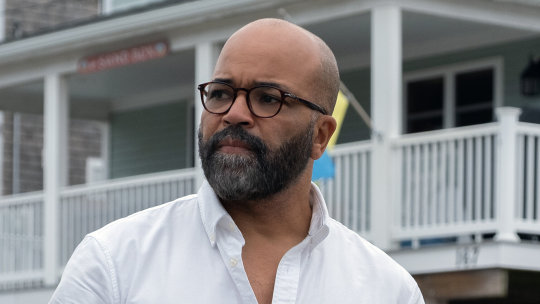
Reality: American Fiction (Cord Jefferson; based on the novel Erasure by Percival Everett)
Best Makeup & Hairstyling
Prediction: Maestro (Kazu Hiro, Kay Georgiou, and Lori McCoy-Bell)
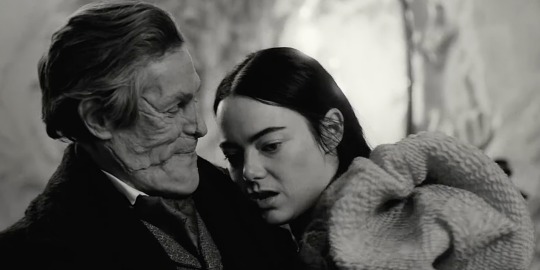
Reality: Poor Things (Nadia Stacey, Mark Coulier, and Josh Weston)
Best Production Design
Prediction: Barbie (Production Design: Sarah Greenwood; Set Decoration: Katie Spencer)/Poor Things (Production Design: James Price and Shona Heath; Set Decoration: Zsuzsa Mihalek)

Reality: Poor Things (Production Design: James Price and Shona Heath; Set Decoration: Zsuzsa Mihalek)
Best Costume Designing
Prediction: Barbie (Jacqueline Durran)/Poor Things (Holly Waddington)
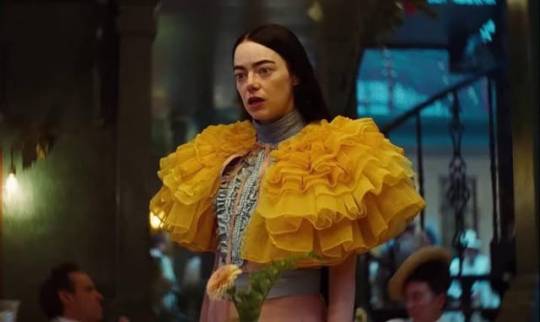
Reality: Poor Things (Holly Waddington)
Best International Feature Film
Prediction: The Zone of Interest (United Kingdom - Jonathan Glazer)

Reality: The Zone of Interest (United Kingdom - Jonathan Glazer)
Best Supporting Actor
Prediction: Robert Downey Jr. (Oppenheimer)
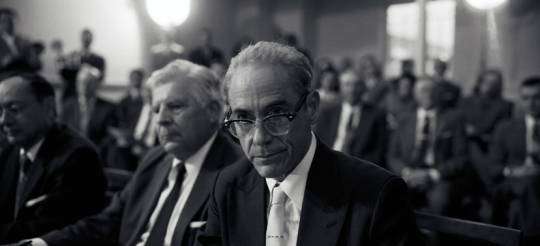
Reality: Robert Downey Jr. (Oppenheimer)
Best Visual Effects
Prediction: Godzilla Minus One (Takashi Yamazaki, Kiyoko Shibuya, Masaki Takahashi, and Tatsuji Nojima)

Reality: Godzilla Minus One (Takashi Yamazaki, Kiyoko Shibuya, Masaki Takahashi, and Tatsuji Nojima)
Best Film Editing
Prediction: Oppenheimer (Jennifer Lame)

Reality: Oppenheimer (Jennifer Lame)
Best Documentary Short Film
Prediction: The Last Repair Shop (Ben Proudfoot and Kris Bowers)

Reality: The Last Repair Shop (Ben Proudfoot and Kris Bowers)
Best Documentary Feature Film
Prediction: 20 Days in Mariupol (Mstyslav Chernov, Michelle Mizner, and Raney Aronson-Rath)

Reality: 20 Days in Mariupol (Mstyslav Chernov, Michelle Mizner, and Raney Aronson-Rath)
Best Cinematography
Prediction: Oppenheimer (Hoyte van Hoytema)

Reality: Oppenheimer (Hoyte van Hoytema)
Best Live Action Short Film
Prediction: The Wonderful Story of Henry Sugar (Wes Anderson and Steven Rales)
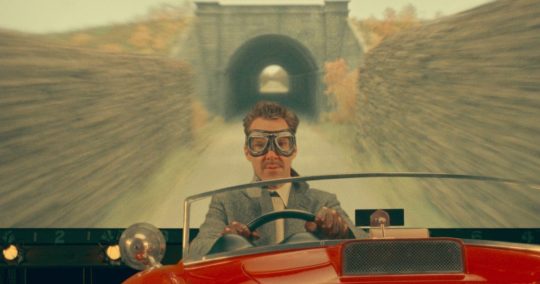
Reality: The Wonderful Story of Henry Sugar (Wes Anderson and Steven Rales)
Best Sound
Prediction: Oppenheimer (Willie Burton, Richard King, Gary A. Rizzo, and Kevin O'Connell)

Reality: The Zone of Interest (arn Willers and Johnnie Burn)
Best Original Score
Prediction: Oppenheimer (Ludwig Göransson)

Reality: Oppenheimer (Ludwig Göransson)
Best Original Song
Prediction: "What Was I Made For?" (Barbie – Music and lyrics by Billie Eilish and Finneas O'Connell)
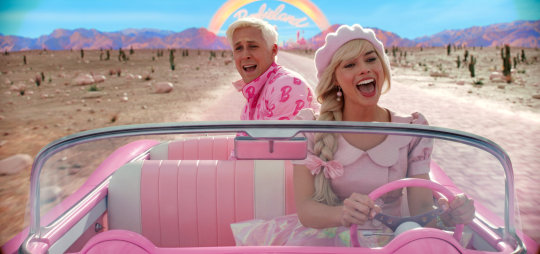
Reality: "What Was I Made For?" (Barbie – Music and lyrics by Billie Eilish and Finneas O'Connell)
Best Actor
Prediction: Cillian Murphy (Oppenheimer)

Reality: Cillian Murphy (Oppenheimer)
Best Director
Prediction: Christopher Nolan (Oppenheimer)

Reality: Christopher Nolan (Oppenheimer)
Best Actress
Prediction: Emma Stone (Poor Things)/Lily Gladstone (Killers of The Flower Moon)/Sandra Hüller (Anatomy of A Fall)
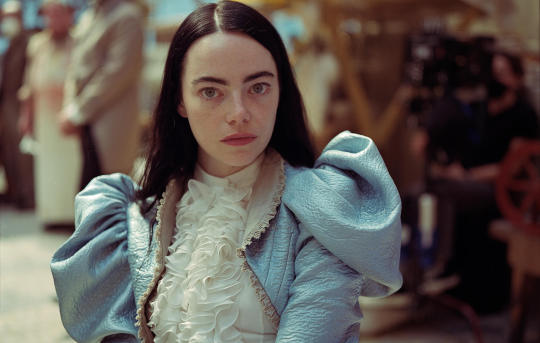
Reality: Emma Stone (Poor Things)
Best Picture
Prediction: Oppenheimer (Emma Thomas, Charles Roven, and Christopher Nolan, producers)

Reality: Oppenheimer (Emma Thomas, Charles Roven, and Christopher Nolan, producers)
Which categories met your expectations? Don’t forget to share them in the comments below.
#oscars#oscars 2024#96th oscars#96th academy awards#oppenheimer#barbie#anatomy of a fall#poor things#american fiction#barbenheimer#the zone of interest
0 notes
Text
Phil Woods - Sonata For Alto Saxophone And Piano (sheet music)
Phil Woods - Sonata For Alto Saxophone And Piano (sheet music) Phil Woods Please, subscribe to our Library. Thank you! Best Sheet Music download from our Library.DiscographyAs leader/co-leader Compilation As sideman
Phil Woods - Sonata For Alto Saxophone And Piano (sheet music)
https://rumble.com/embed/v1pema8/?pub=14hjof
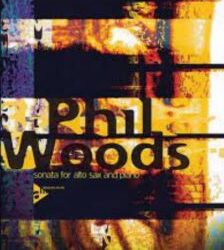
Phil Woods
Woods ( Springfield , Massachusetts , November 2, 1931 - Stroudsbourg, Pennsylvania , September 29, 2015 ) was an American jazz Philip Wells musician , saxophonist alto , and clarinetist ; he has also occasionally played the soprano . He falls into the stylistic current of bebop.
Please, subscribe to our Library. Thank you!
Phil Woods studied music with Lennie Tristano , who has been a major influence on his career, at the Manhattan School of Music and The Juilliard School . His friend Joe Lopes taught him to play the clarinet, as there was no lead saxophone at Juilliard at the time. Although he never copied Charlie Parker , he was known as the "New Bird", a nickname that has also been applied to other musicians such as Sonny Stitt and Cannonball Adderley at one point or another in his careers. He wanted to take the baton from Parker and expressed it like this: “They say that Charlie Parker was God. In that case, I am his messenger ” or “I never get tired of playing Charlie Parker's music, in the same way that no one gets tired of playing Mozart”. His professional career began in 1954 with a brief collaboration with Richard Haynes . He later was engaged by the Charlie Barnet Orchestras and by the Jimmy Raney Quintet . Also in 1954 he recorded his first album under his name and in a quintet for the "New Jazz" label and entitled Phil Woods and New Jazz Quintet . In 1956, he entered Dizzy Gillespie, performing all over the world during the three years he was with him. He then moved on to drummer Buddy Rich's Orchestra band in 1958 and between 1959 and 1961, he played in the Quincy Jones . In 1961, Phil Woods recorded his first album as a quintet with his own compositions, Rights of Swing , for the "Candid" label with the accompaniment of Tommy Flanagan on piano and Curtis Fuller on trombone. In 1962, he participated in the group that accompanied Benny Goodman on a tour in the Soviet Union sponsored by the State Department, of which the album Benny Goodman and his Orchestra in Moscow remains . Phil Woods later performed and recorded in the Thelonious Monk and Oliver Nelson groups , but did not record again as a leader until 1966. He collaborated with a host of jazz musicians throughout his life. His contributions can be highlighted of him on albums by John Lewis ( Orchestra USA ), Sonny Rollins ( Alfie ), Stéphane Grapelli ( Master Sessions, vol. 1 ) and Bill Evans ( Symbiosis ). Or in soundtracks of famous films like El hustler or Blow Up . After going to France in 1968, Woods led The European Rhythm Machine , along with pianist Gordon Beck; Henri Texier, on double bass; and Daniel Humair, on drums, a group that tended towards the jazz avant-garde. He returned to the United States in 1972 and, after a failed attempt to establish an electronic group, he formed a quintet that lasted, with some changes in its members, until 2004. In 1973, after a musical encounter with Michel Legrand , Woods recorded the album Musique du Bois , which is situated in the modern jazz tradition and helps to redirect jazz to its natural channels on the basis of updating the forms of bebop. In 1979, Phil Woods recorded More Live , at the Armadillo World Headquarters in Austin, Texas. His best-known work as a sideman has perhaps been Billy Joel's pop song " Just the Way You Are ", in which he plays alto sax. He also played alto sax on Steely Dan's "Doctor Wu", from his well-known and highly praised 1975 album Katy Lied , as well as Paul Simon's 1975 hit Have a Good Time . During his last years he recorded some tributes to fellow musicians such as Thelonious Monk , Our Monk , a selection of his compositions recorded with the Italian pianist Franco D'Andrea. When he was named a Master of Jazz by the US National Endowment for the Arts 5 in 2007, he said: “Jazz will never die. It's music forever, and I like to think that my music is somewhere and will have a duration that may not be forever, but that it can influence others." Although Woods is primarily a saxophonist, he is also a fine clarinet player and his solos are scattered throughout his recordings. A good example is his clarinet solo in Misirlou from the album Into The Woods . Woods was married to Chan Parker, the widow of Charlie Parker, for seventeen years. On the morning of September 29, 2015, great teacher Phil Woods passed away after a long battle with pulmonary emphysema. Discography As leader/co-leader 1954– 55: Pot Pie (New Jazz, 1963) with Jon Eardley 1955: Woodlore (Prestige, 1956) 1956: Pairing Off (Prestige, 1956) 1956: The Young Bloods (Prestige, 1957) with Donald Byrd 1957: Four Altos (Prestige) with Gene Quill, Hal Stein, Sahib Shihab 1957: Phil and Quill with Prestige with Gene Quill 1957: Sugan (Status) 1957: Warm Woods (Epic) 1961: Rights of Swing (Candid) 1967: Greek Cooking (Impulse!) 1968: Alto Summit (MPS) with Lee Konitz, Pony Poindexter and Leo Wright 1968: Alive And Well In Paris (Pathé) 1969: Round Trip (Verve) 1970: Phil Woods and his European Rhythm Machine at the Frankfurt Jazz Festival (Embryo) 1970: Phil Woods and his European Rhythm Machine at the Montreux Jazz Festival (MGM) 1972: Live At Montreux 72 (Verve) 1974: New Music by the New Phil Woods Quartet (Testament) 1974: Musique du Bois (Muse) 1975: Floresta Canto (RCA) with Chris Gunning Orchestra 1975: Images (RCA Victor) with Michel Legrand 1976: Phil Woods & The Japanese Rhythm Machine (RCA Victor) 1976: The New Phil Woods Album 1976: Altology (Prestige) 1977: Live from the Show Boat 1977: Summer Afternoon Jazz (Hindsight) 1978: Song for Sisyphus (King (Japan)) 1979: I Remember (Gryphon) 1980: Phil Woods Quartet Live (Clean Cuts) 1980: Phil Woods/Lew Tabackin (Omnisound) with Lew Tabackin 1981: Three for All (Enja) with Tommy Flanagan and Red Mitchell 1981: 'More' Live (Adelphi) 1981: European Tour Live (Red) 1982: Live from New York (Palo Alto) 1983: At the Vanguard (Antilles) 1984: Integrity (Red) 1984: Heaven (Evidence) 1984: Piper at the Gates of Dawn (Sea Breeze Jazz) with Chris Swansen 1986: Dizzy Gillespie Meets Phil Woods Quintet (Timeless) with Dizzy Gillespie 1987: Bop Stew; Bouquet (Concord) 1988: Evolution; Here's to My Lady (Concord) 1988 "Little Big Band Évolution" 1989: Embracable You (Philology) 1989: My Man Benny, My Man Phil (MusicMasters) with Benny Carter 1989: Here's to My Lady (Chesky) 1990: Flash (Concord) 1990: Phil's Mood (Philology) 1991: All Bird Children; Real Life (Concord) 1991: Flowers for Hodges (Concord) 1991 "Altoist" 1991: Real Life, The Little Big Band (Chesky) 1992: Full House (Milestone) 1994: Just Friends; Our Monk (Philology) 1995: Plays the Music of Jim McNeely (TCB) 1996: Mile High Jazz Live in Denver (Concord) 1996: Another Time, Another Place (Evening Star) with Benny Carter 1996: Astor and Elis (Chesky) 1996: The Complete Concert (JMS) with Gordon Beck 1997: Celebration! (Concord) 1998: The Rev and I (Blue Note) with Johnny Griffin 1999: Cool Woods (somethin' else) 2003: The Thrill Is Gone (Venus) 2004: Beyond Brooklyn with Herbie Mann, finished weeks before Mann's death 2006: Pass the Bebop (Cowbell) with Benjamin Koppel and Alex Riel Trio 2006: Tel Aviv Jazz Festival (Philology) with Robert Anchipolovsky and Tony Pancella Trio 2006: American Songbook (Kind of Blue) with Brian Lynch 2007: American Songbook, Vol. 2 (Kind of Blue) with Brian Lynch 2009: Ballads & Blues (Venus) 2011: Man with the Hat (Pazz) with Grace Kelly 2011: Phil & Bill with Bill Mays (Palmetto) Compilation Into the Woods (The Best of Phil Woods) (Concord, 1996) Moonlight In Vermont (CTI, 2005) As sideman With Manny Albam Jazz Goes to the Movies (Impulse!, 1962) The Soul of the City (Solid State, 1966) With Gary Burton 1962: Who Is Gary Burton? (RCA, 1963) 1964: The Groovy Sound of Music (RCA, 1965) With Dizzy Gillespie World Statesman (Norgran, 1956) Dizzy in Greece (Verve, 1957) The New Continent (Limelight, 1962) Rhythmstick (CTI, 1990) With Friedrich Gulda Friedrich Gulda at Birdland (RCA Victor, 1957) A Man of Letters (Decca, 1957) With Quincy Jones The Birth of a Band! (Mercury, 1959) The Great Wide World of Quincy Jones (Mercury, 1959) I Dig Dancers (Mercury, 1960) The Quintessence (Impulse!, 1961) Quincy Jones Explores the Music of Henry Mancini (Mercury, 1964) Golden Boy (Mercury, 1964) I/We Had a Ball (Limelight, 1965) Quincy Plays for Pussycats (Mercury, 1965]) – recorded in 1959-65 With Michel Legrand Legrand Jazz (Philips, 1958) After the Rain (Pablo, 1982) Michel Legrand and Friends (RCA, 1975) With Bryan Lynch Simpático (The Brian Lynch/Eddie Palmieri Project) (ArtistShare, 2006) Bolero Nights for Billie Holiday (Venus, 2008) With Herbie Mann The Jazz We Heard Last Summer (Savoy, 1957) Yardbird Suite (Savoy, 1957) With the Modern Jazz Quartet Jazz Dialogue (Atlantic, 1965) MJQ & Friends: A 40th Anniversary Celebration (Atlantic, 1994) With Thelonious Monk The Thelonious Monk Orchestra at Town Hall (Riverside, 1959) – live Big Band and Quartet in Concert (Columbia, 1963) – live With Oliver Nelson Impressions of Phaedra (United Artists, 1962) Full Nelson (Verve, 1963) More Blues and the Abstract Truth (Impulse!, 1964) Fantabulous (Argo, 1964) Oliver Nelson Plays Michelle (Impulse!, 1966) Happenings with Hank Jones (Impulse!, 1966) The Sound of Feeling (Verve, 1966) Encyclopedia of Jazz (Verve, 1966) The Spirit of '67 with Pee Wee Russell (Impulse!, 1967) The Kennedy Dream (Impulse!, 1967) Jazzhattan Suite (Verve, 1968) With Lalo Schifrin Samba Para Dos with Bob Brookmeyer (Verve, 1963) Once a Thief and Other Themes (Verve, 1965) With Jimmy Smith Monster (Verve, 1965) Hoochie Coochie Man (Verve, 1966) Got My Mojo Workin' (Verve, 1966) With Clark Terry The Happy Horns of Clark Terry (Impulse!, 1964) Squeeze Me! (Chiaroscuro, 1989) With George Wallington Jazz for the Carriage Trade (Prestige, 1956) The New York Scene (Prestige, 1957) Jazz at Hotchkiss (Savoy, 1957) Read the full article
1 note
·
View note
Text
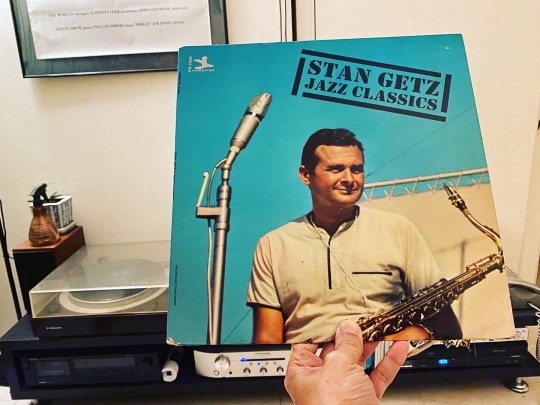
「Jazz Classics」Stan Getz '49 & '53
「Early Stan」というタイトルで出ていたもののステレオ・リイシュー盤。ステレオと言ってもなんちゃってステレオで、高音域は右チャンネル、低音域は左チャンネル…って代物。ま、割とクリアに聴けますが、ヘッドフォンで聴くと気持ち悪いです。一応、オリジナル盤です。
ジミー・レイニー(g)との双頭バンド('53)とテリー・ギブス(vib)のバンド('49)の録音が両面に入ってます。
ギブスの方はいささかサウンドも録音も古臭いです。しかし、レイニーとの双頭バンドはかなり凝ったクール・ジャズ。コレを僕のバンドのメンバーに聴かせたら「マーク・ターナーのバンドかと思った」という感想(笑)それ程、最先端な音楽を50年代初頭に既に演ってたって事です。
ゲッツの足取りを辿って来ましたが、恐らくクールジャズもボサもチックとのフュージョンも彼にとっては何ら変わらないジャズであり、それぞれの時代にフィットした微妙なスタイル・チェンジを経て、最終的にはバロンとの「People Time」に自然と辿り着いたのだと思います。
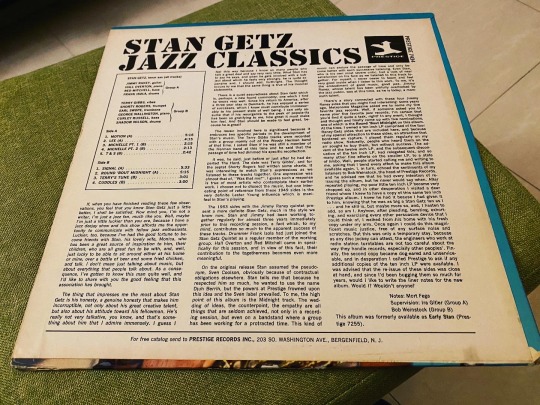
2 notes
·
View notes